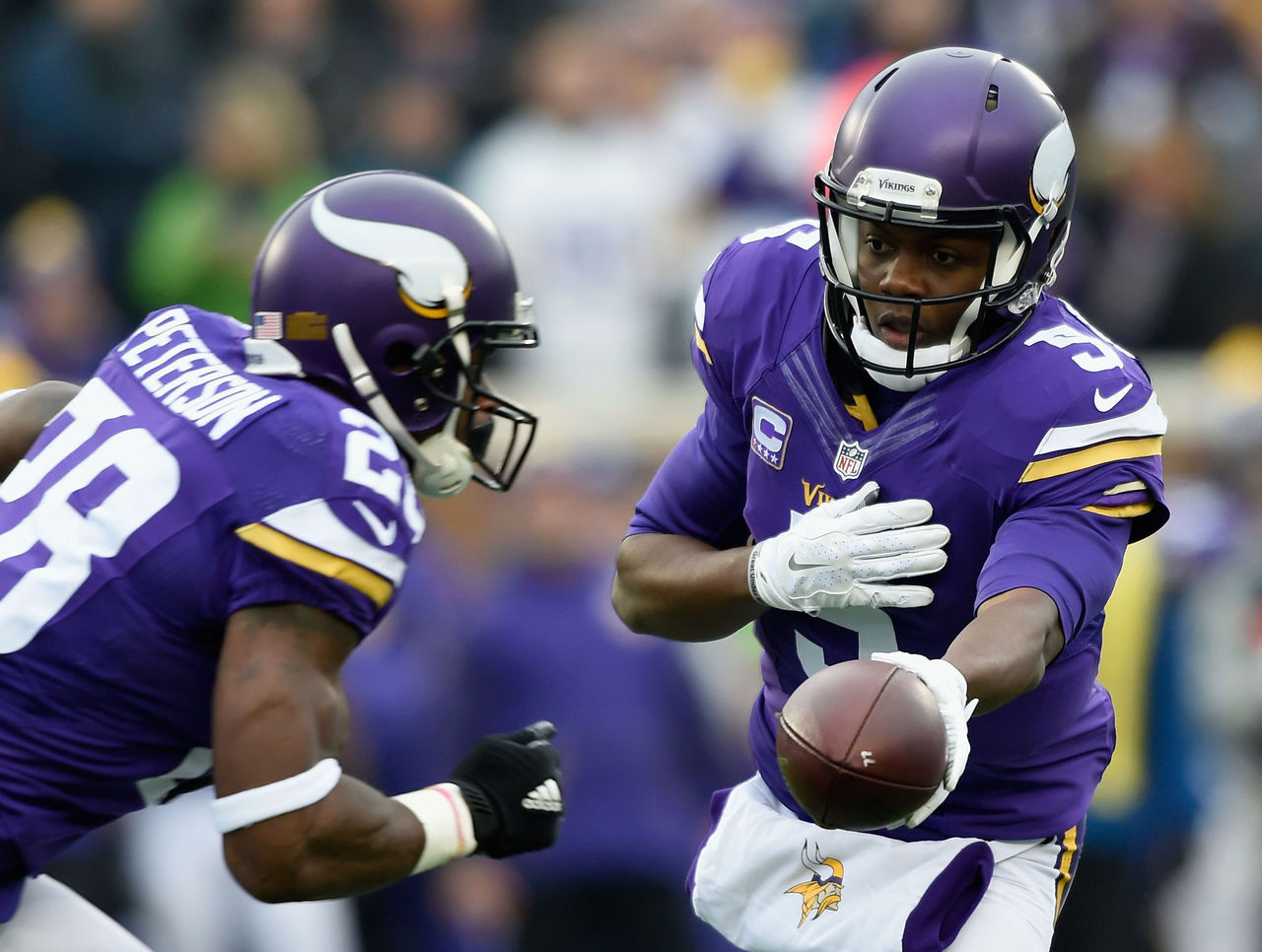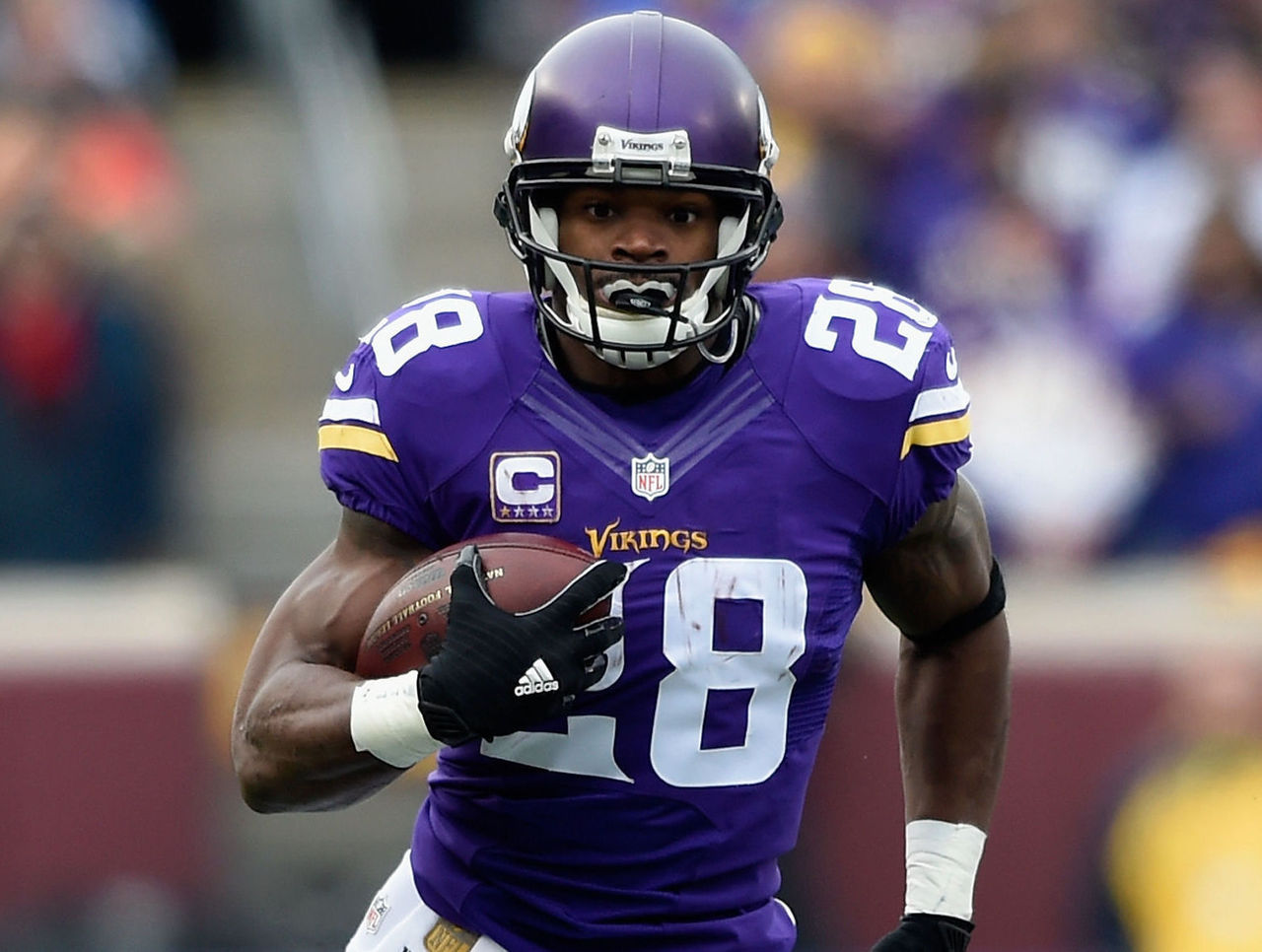Why 2016 will be Adrian Peterson's last great season
There's a little argument that Minnesota Vikings star running back Adrian Peterson won't end up in the Hall of Fame when he finally walks away from the game.
He's been the consensus top running back in the league for nearly a decade, became one of just seven players in NFL history to rush for 2,000-plus yards - coming up nine yards short of the all-time single-season record - and won three rushing titles.
However, Peterson's now unlikely to add more than one elite season to his resume. He's 31 years old - an age when players at his position usually face a steep decline.
Although he's claimed he'll play until he's 40, there's no doubt the former NFL MVP's in the twilight of his career.
While it's almost certain Peterson will remain effective beyond the 2016 season, his days as the league's top runner are almost over.
Vikings will soon transition offense to suit Bridgewater

Teddy Bridgewater is the future of the Vikings' franchise.
The quarterback isn't an elite talent, but he's shown enough during his first two seasons for Minnesota to place the foreseeable future of the organization in his hands.
His numbers aren't great (6,150 passings yards, 28 touchdowns, and 21 interceptions in two seasons), but part of the reason for that is the presence of Peterson.
Bridgewater was forced to play his rookie season without Peterson, who was suspended for the campaign. This meant the Vikings' offense ran through the quarterback, and he was put in a system that suited him. Upon Peterson's return last season, though, the team shifted back to its running game.
Unfortunately, Peterson's and Bridgewater's skills don't mesh well together.
Peterson is most effective when running with his quarterback under center, so naturally the Vikings tailored their offense around that.
| Peterson 2015 | Carries | Yards | YPA | TDs | First downs |
|---|---|---|---|---|---|
| Shotgun | 39 | 57 | 1.7 | 1 | 4 |
| Under center | 311 | 1463 | 4.7 | 10 | 70 |
The problem is, Bridgewater plays best in the shotgun. His numbers from that formation dwarf those he puts up when throwing from under center.
| Bridgewater 14-15 | Attempts | Completions | Completion % | Yards | YPA | TDs | INTs |
|---|---|---|---|---|---|---|---|
| Shotgun | 637 | 433 | 68% | 4653 | 7.3 | 22 | 10 |
| Under center | 235 | 134 | 57% | 1618 | 6.9 | 7 | 11 |
The Vikings will eventually have to decide which philosophy they'll move forward with. They cannot continue to try to walk the line between appeasing both Peterson and Bridgewater, and they most certainly can't continue to stunt the growth of their young quarterback to accommodate the last few years of production from the running back.
While it's possible Peterson could develop a more versatile skill set and improve as a pass-catcher in order to remain on the field with Bridgewater in the shotgun, it's more likely the Vikings use other runners in that spot.
Minnesota will allow Peterson to remain the centerpiece of the offense for the majority of 2016 regular season, allowing him to put up another year of great numbers. However, if that fails, a late-season change to a passing-led offense will happen, meaning Peterson's role and numbers will decline in 2017 and beyond.
Elite seasons at 32-plus are rare
Peterson is a once-in-a-generation talent, but time beats all, regardless of their abilities.
When the 2017 season starts, Peterson will have been 32 years old for six months. While it's easy to say he'll be the exception, not the rule, when it comes to playing at a high level beyond that age, history says otherwise.
Of the 250 best single-season rushing totals in NFL history, only two were by a running back aged 32 or older: Walter Payton (aged 32, 1,333 yards, eight touchdowns) and John Riggins (aged 34, 1,347, 24 touchdowns).
That's a lot of precedent to argue against. Even the two examples of Payton and Riggins do little to convince that Peterson can be elite for several more seasons.
Payton is considered by many to be the best running back in NFL history, and even he was done after that spectacular season at age 32. A year later, he rushed for 533 yards, and the year after that he retired.
Riggins appears to be an anomaly. His best season by far was at age 34, which was helped by the fact he didn't have the number of carries a back of his age usually had at that point in his career. It's also hard to class Riggins' season as "elite" since he averaged 3.6 yards per attempt.

It's not only age that indicates decline; carries do, too. A running back generally peaks in efficiency and workload at some point between 2,250 and 2,500 career touches, according to apexfantasyleagues.com.
Heading into 2016, Peterson is at 2,636 career touches.
Even allowing him some leeway because he's far from your standard running back, the punishment he's taken over eight seasons of play in the NFL means he's heading for a cliff.
While no one wants to see one of the best players in recent memory decline, it's inevitable.
We all watched it happen to Peyton Manning over the last season-and-a-half of his career, and it's going to happen to Peterson.
Enjoy him in 2016, NFL fans. It'll likely be the last time we witness vintage A.D.
(Statistics courtesy pro-football-reference.com)